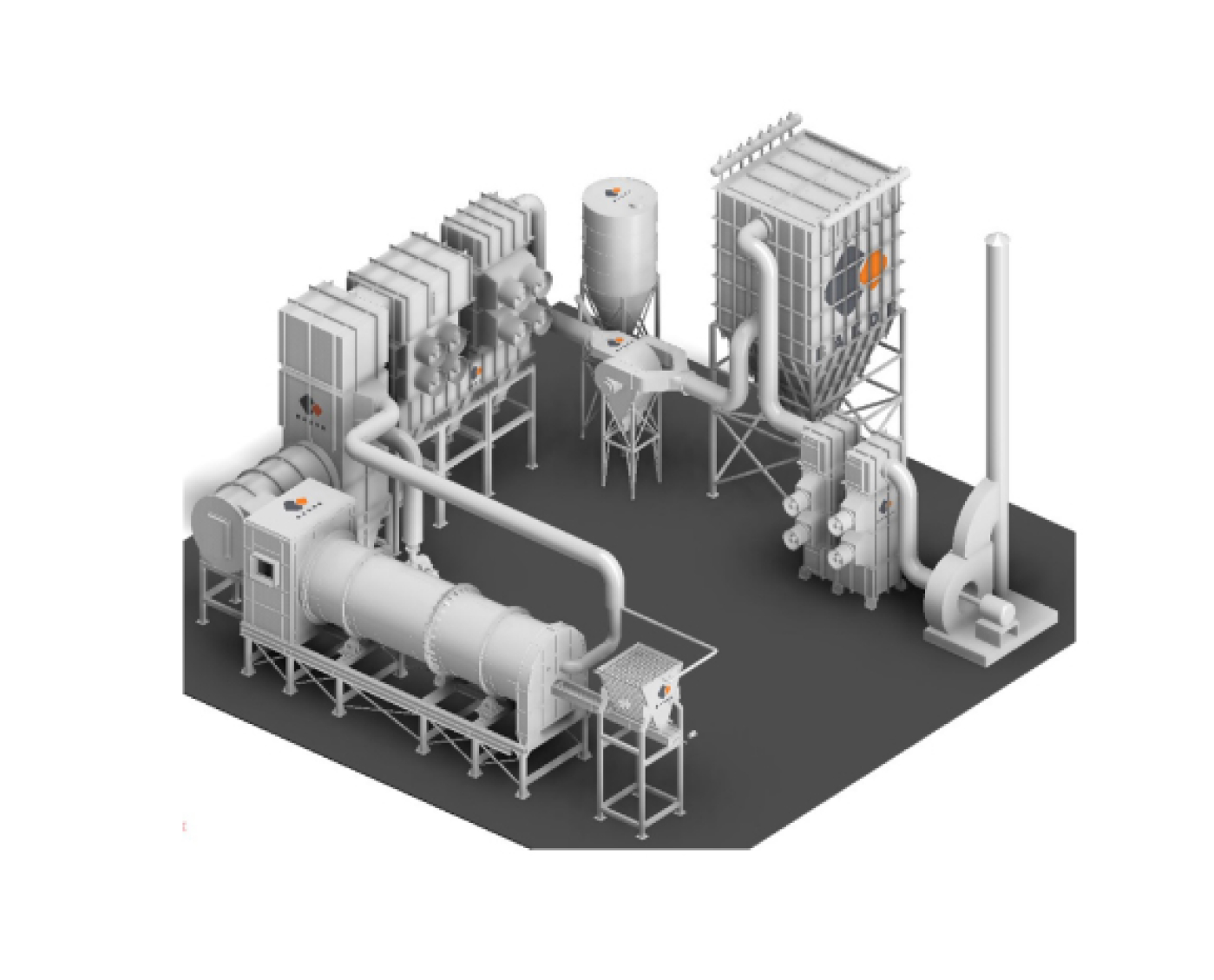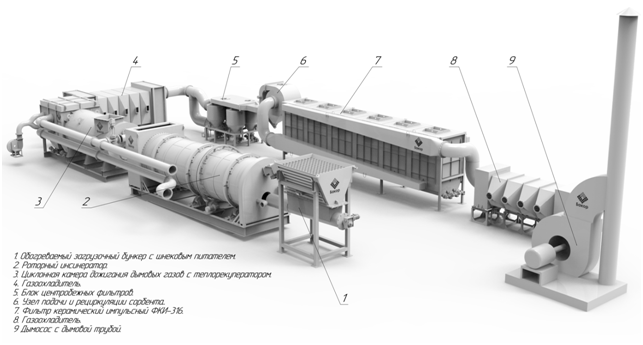
Designation:
The proposed installation will find application:
Applications:
Benefits:
The mobility of the unit and the high degree of readiness of individual assemblies allow to minimize construction and installation work and start work at the site prepared in advance, no more than 24 hours after arrival at the site.
Compact design: the unit is two to three times more compact than other technological installations;
Installation is delivered by trucks and does not require installation and operation of expensive foundations, buildings, structures.
Installation operation is automated. All operations, except mechanized loading of storage hopper, processed waste and periodic unloading of ash and dust without human participation.
For the first time automatic regulation of combustion air temperature from outside to 400°C is realized, which allows to optimize the process of waste incineration with different combustion heat, even if it changes during the operation, with the consumption of hydrocarbon fuel only in the ignition burner with the consumption of not more than 700 MJ/t (200 kW/t).
Combining in a ceramic filter with a catalytic coating purification at 350-400°C of combustion products from dust, heavy hydrocarbons and carbon monoxide to concentrations corresponding to the environmental legislation of Russia and the European Union.
Availability of catalytic after-treatment of gas allows the afterburning process after the reactor at 900-1050°C. High filtration efficiency: dust emissions are typically less than 2 mg/Nm3, regardless of the initial concentration;
Minimum required oxygen content in flue gases for catalytic oxidation of harmful components is automatically maintained by the automation system of the installation.
Optimization of reagent consumption: high chemical activity of the reagent at high temperature.
Possibility to use the thermal potential of high-temperature gases by installing a heat recuperator behind the ceramic filter with steam or hot water generation.
The design of the device which loads the waste into the rotary reactor makes it possible to adjust the feeding of the set waste mass with different density in the range of 0.2-2 t/m3.
If there is a constant demand for hot water, part or all of the gas coolers can be replaced by economizers producing up to 8 GJ/h of heat energy.
If necessary, the installation can be retrofitted for incineration along with solid and liquid waste.
Operating principles:
Technological scheme of the thermal neutralization unit UTO 1000 R is resulted on Fig. 1.
The thermal neutralization unit is based on a rotary kiln (rotary reactor) lined with brick (2). The waste is fed into a heated charging hopper with a 150×150 grate (1) from which it enters the furnace through a screw feeder or a hydraulic pusher. Thermal destruction of the waste occurs at temperatures from 800 to 950°C. The ash is discharged from the reactor through the screw feeder of the apparatus discharge chamber.
After the rotary reactor the high-temperature combustion products fall through the lined gas duct into the lined cyclone afterburning chamber (3) where afterburning of flue gases at a temperature to 1050°C and oxygen content of at least 8% takes place. The temperature in the afterburning chamber and the oxygen content are maintained automatically by means of the control and measuring instruments in the installation. The dust captured in the cyclone reactor is removed from the apparatus by a screw feeder. From the cyclone chamber flue gases are directed to the heat recuperator (4) where they are cooled from 1050°C to 930°C.
The heat recuperator has screw feeders in its lower part for continuous dust extraction. In the heat recuperator atmospheric air is heated up to 400°C to feed it into the rotary reactor (2). After the heat recuperator flue gases are sent to the gas cooler 1 (5) where flue gases are cooled from 930°C to 300-400°C, the gas cooler -1 also has a screw feeder in its lower part for continuous dust extraction. Then the flue gases are sent to 4 centrifugal dust collectors (6), installed in parallel, in which solid ash particles are cleaned from the gases.
The flue gases are sent from the centrifugal dust collectors to the ceramic impulse filter СIF (7) for complex purification of the flue gases to the requirements defined in ITS 9-2020 “Utilization and neutralization of waste by thermal methods”. After the ceramic impulse filter the combustion gases come to the gas cooler 2 (8) where they are cooled down to 120-160°C and through the smoke exhauster (9) and chimney (10) are discharged into the atmosphere.
Ratings:
Item # | parameter | value | Unit of measure |
1 | Internal volume of the rotary reactor | 18.2 | m3 |
2 | Waste residence time in the volume of the rotary reactor | 2 | hours |
3 | Internal volume of cyclone afterburning chamber | 8.8 | m3 |
4 | Rate of waste combustion (solid waste, oil-contaminated soil) | 1000 | kg/h |
5 | Number of modules (module size — container 40 ft) | 5 | pcs. |
6 | Dimensions (L×W×H) | 60×2.4×2.59 | m |
7 | Installation weight | ton | |
8 | Fuel type: (diesel; gas; fuel oil; waste oil) | ||
9 | Fuel consumption during operation (natural gas) | 15 | m3/h |
10 | Electricity consumption | 60 | kW/h |
11 | Direct costs for thermal decontamination (fuel and electricity costs). | 0.4 | Rub/kg |
11 | Flue gases temperature at the ceramic filter inlet | °C | 300-450 |
12 | Flue gas temperature at the installation outlet | °C | 180 |
13 | Overall dimensions of the installation: L×W×H | м | 12×2.42×2.59 |
Веб-форма не найдена.